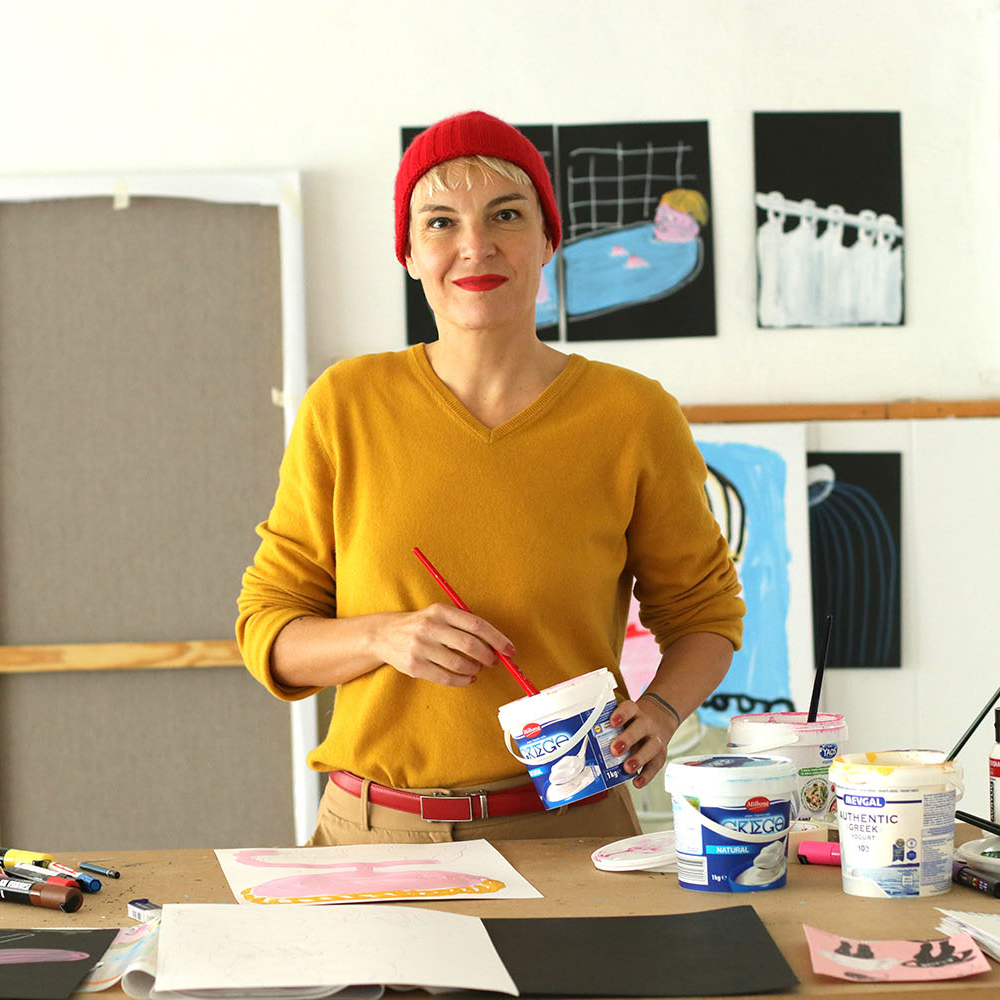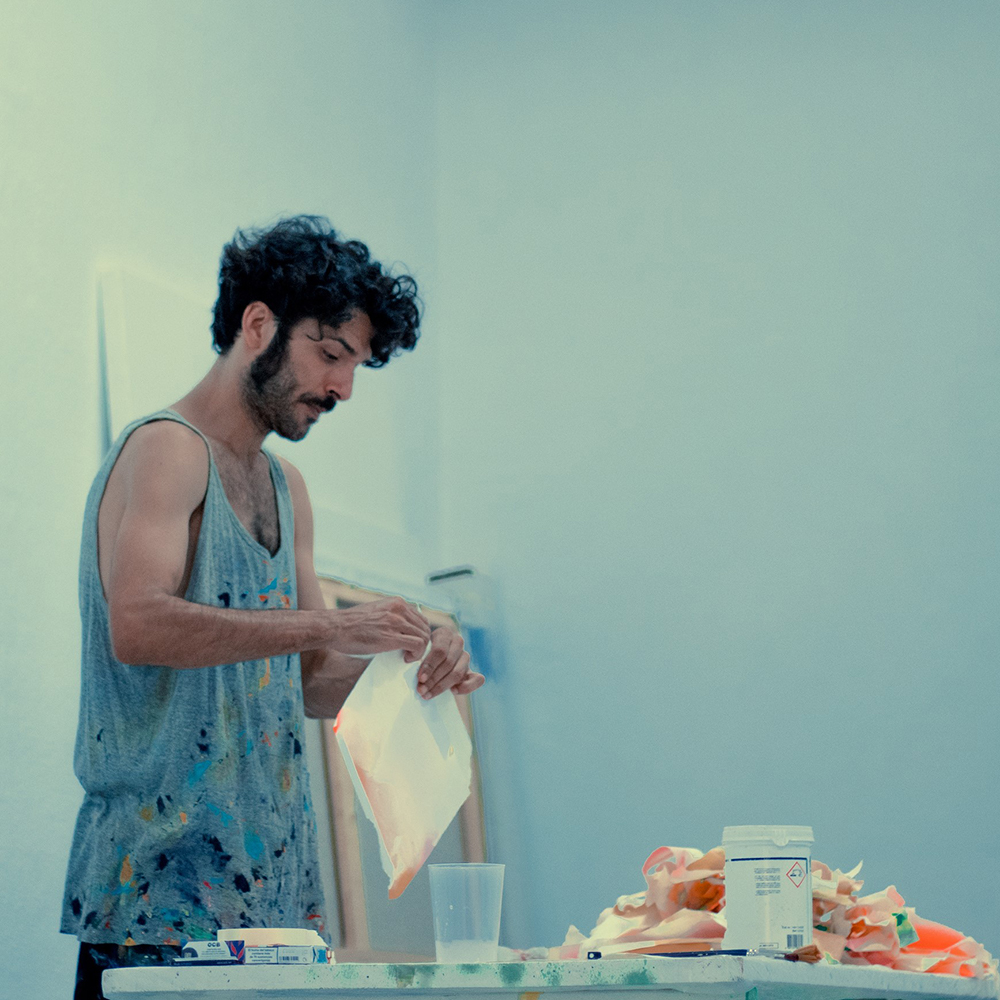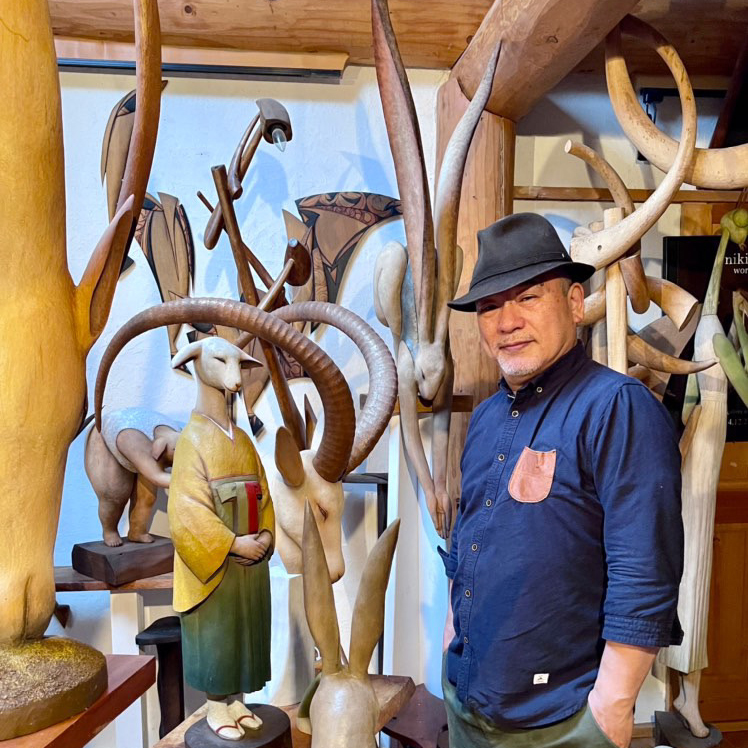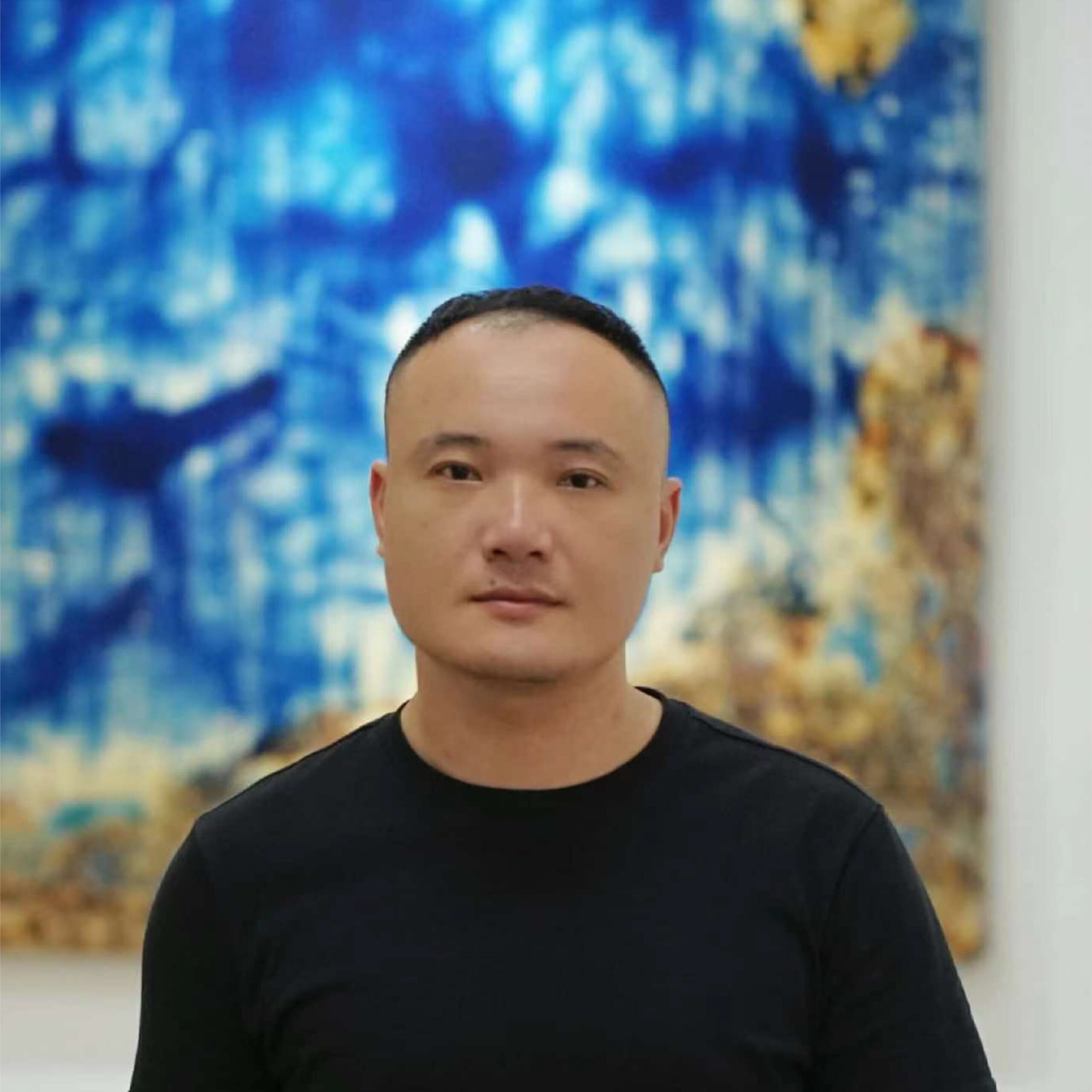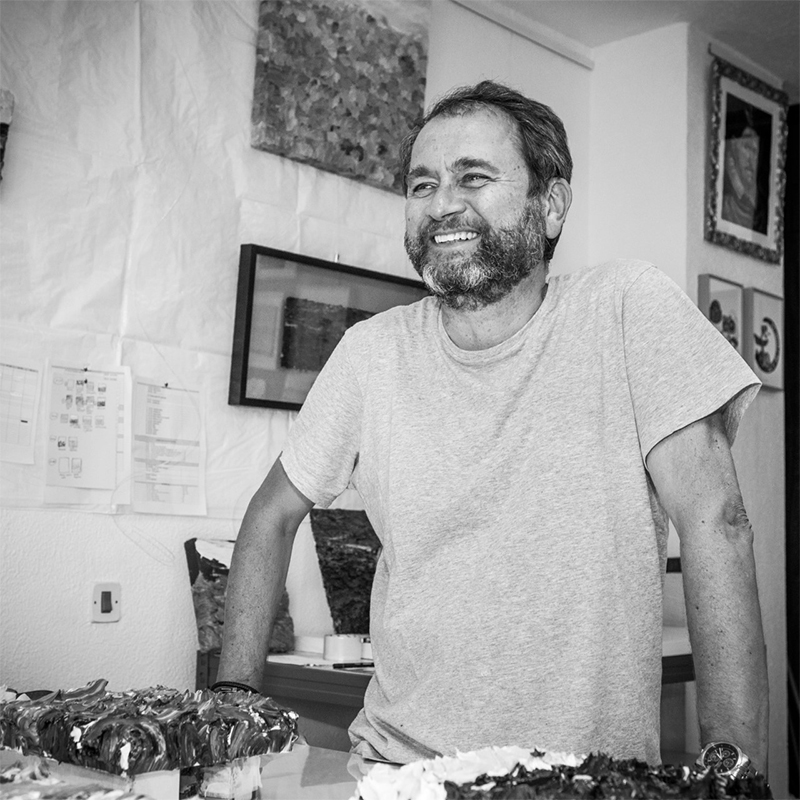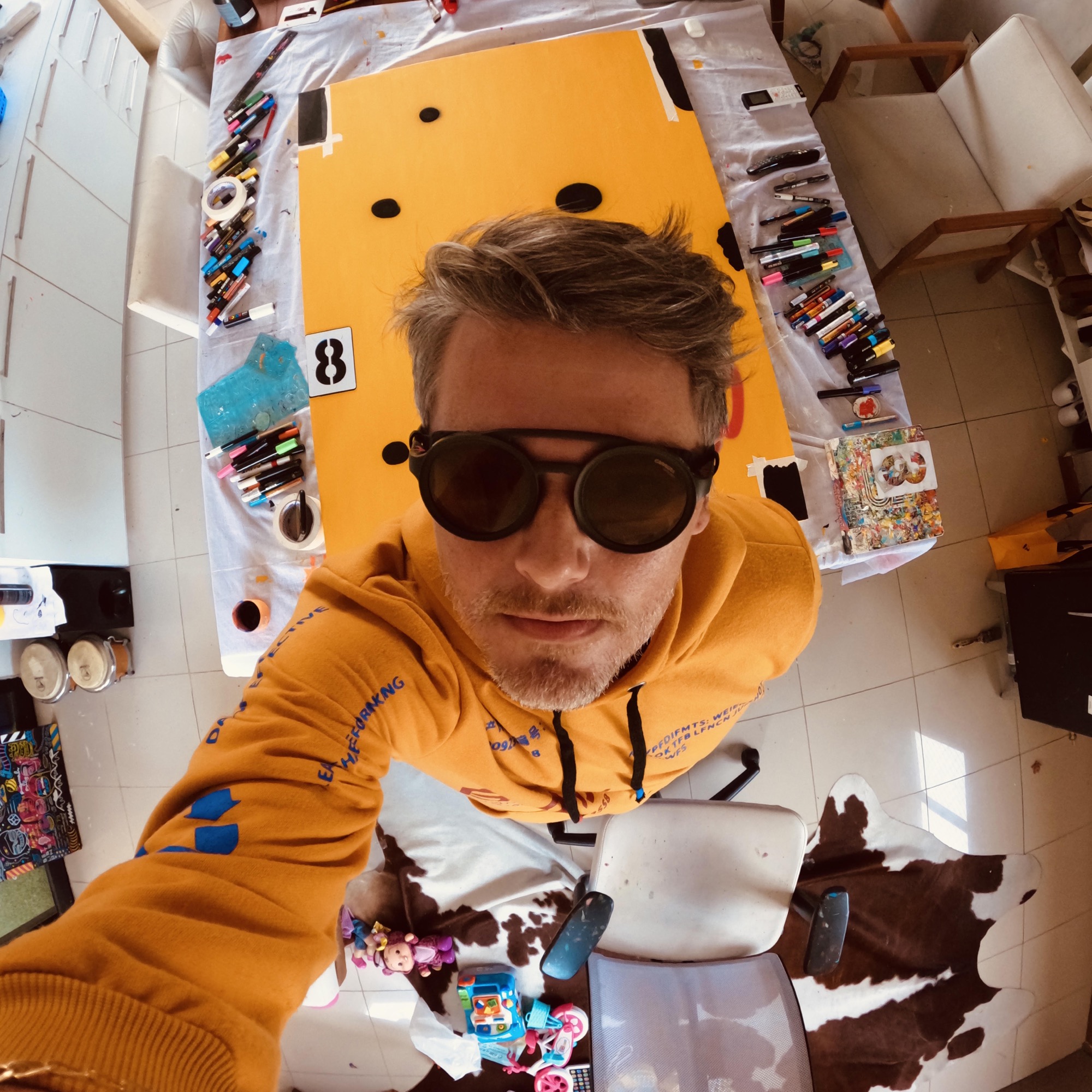
Graduated in advertising, Lucas Lamenha has been working as a creative for over 15 years. He has received significant national and international awards throughout his career, such as 5 trophies in the Gramado World Award (2003 and 2005) and 2 Short Lists in the London International Festival (2003), one of the most revered festivals in the world. It was his experience as Creative Director in advertising that led Lucas Lamenha to explore and discover himself as an artist.
Lucas uses graphic elements and characters that not only reflect the modern world’s chaotic surplus of information, but also work together to convey a larger story. He draws the viewer in repeatedly and provokes the public by using storytelling as a key element in his thematic, transformative way of converting memories into stories told with spray, acrylic and marker – Stories about a ludic, original and colorful universe of his own making.
The uniqueness of his strokes and his outstanding style imprint generalities, such as numbers, music, dilemmas, idiosyncrasies, love and peace, that translate some of Lucas’ essence, past and present into paper, canvas and objects. By doing so, Lucas is taking the sub-genre of “doodle art” into previously uncharted territory.
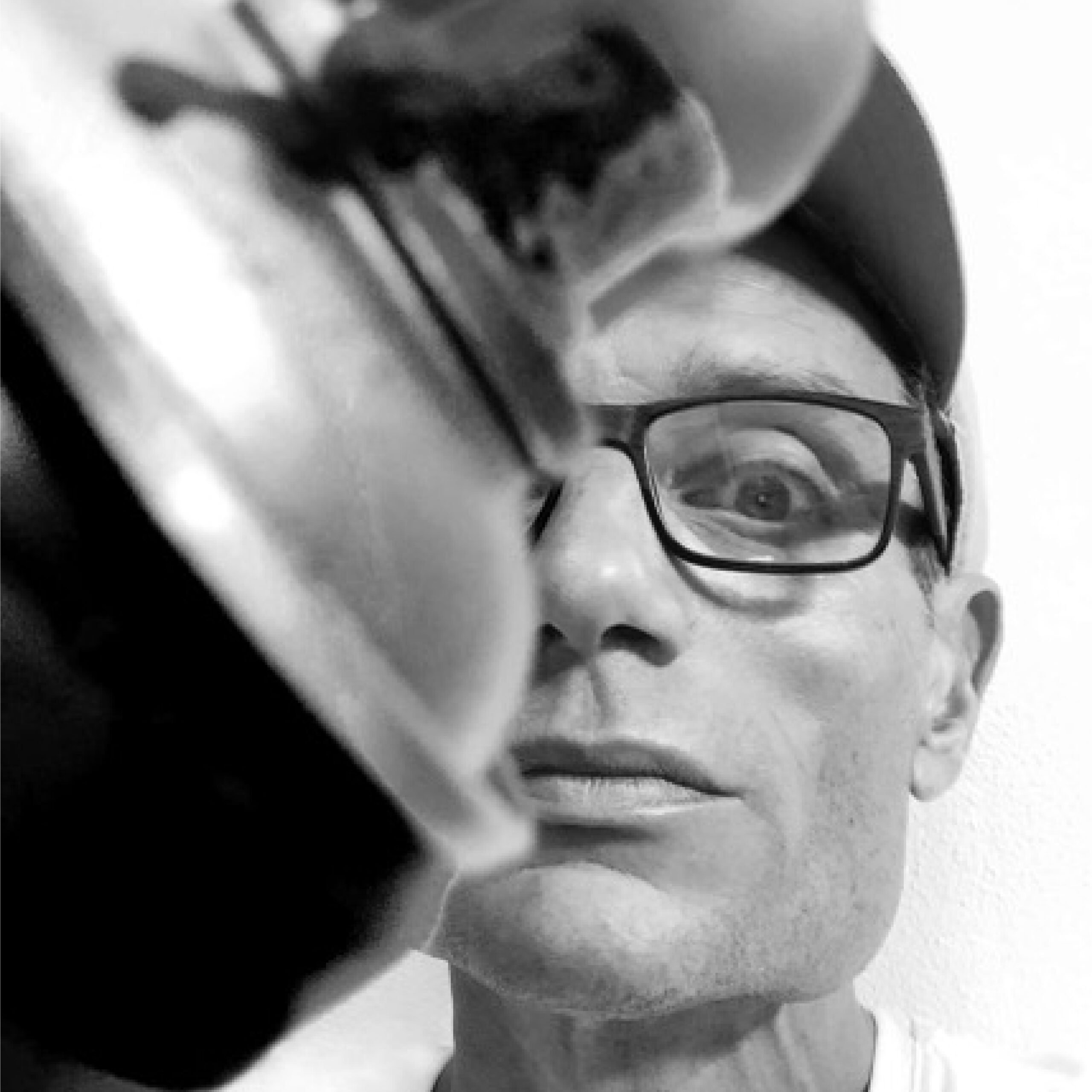
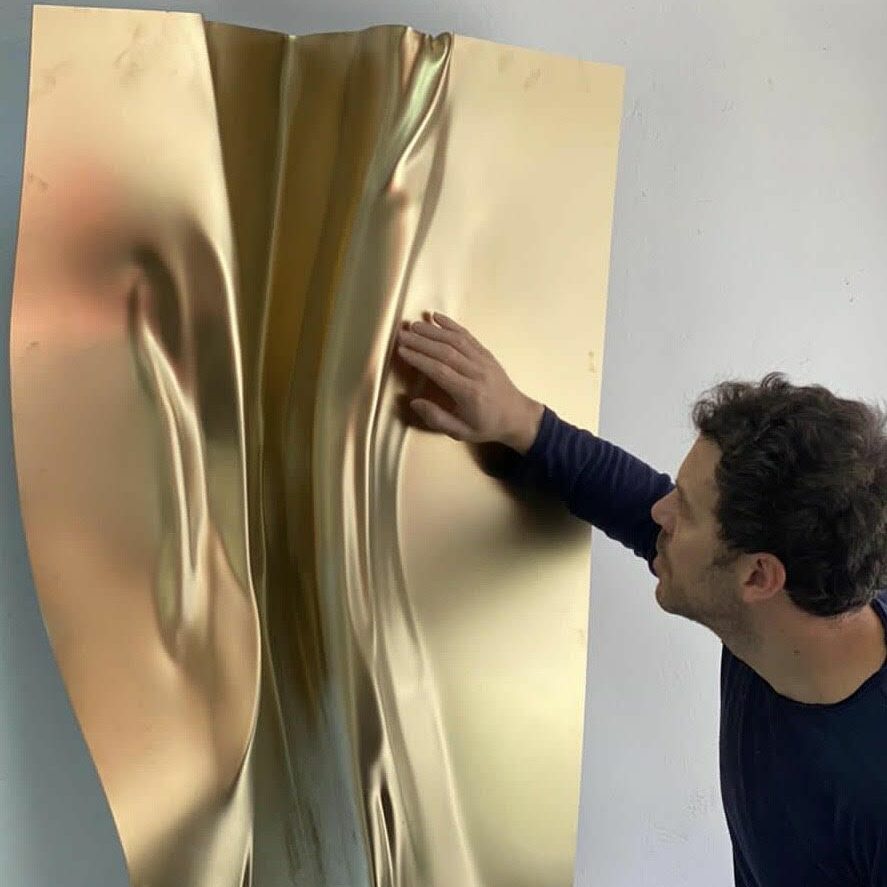

fullsizeoutput_84fd-scaled-e1689649205117.jpeg)
